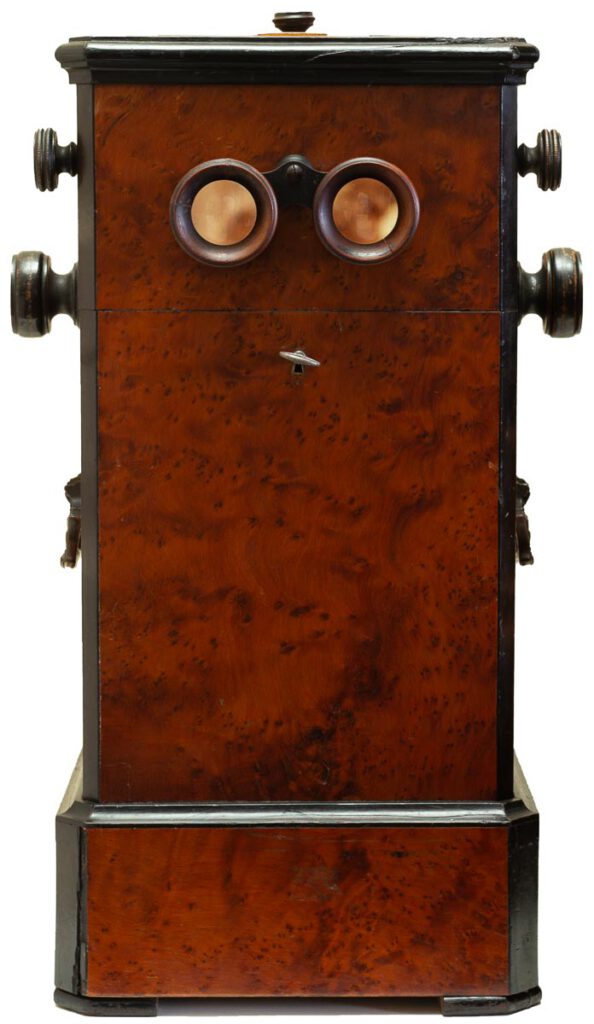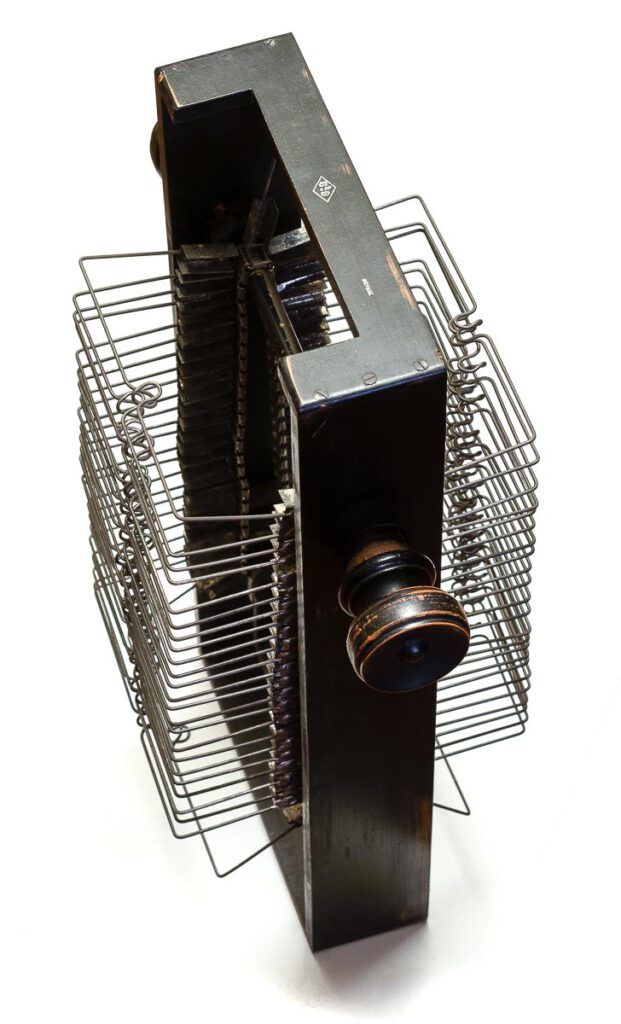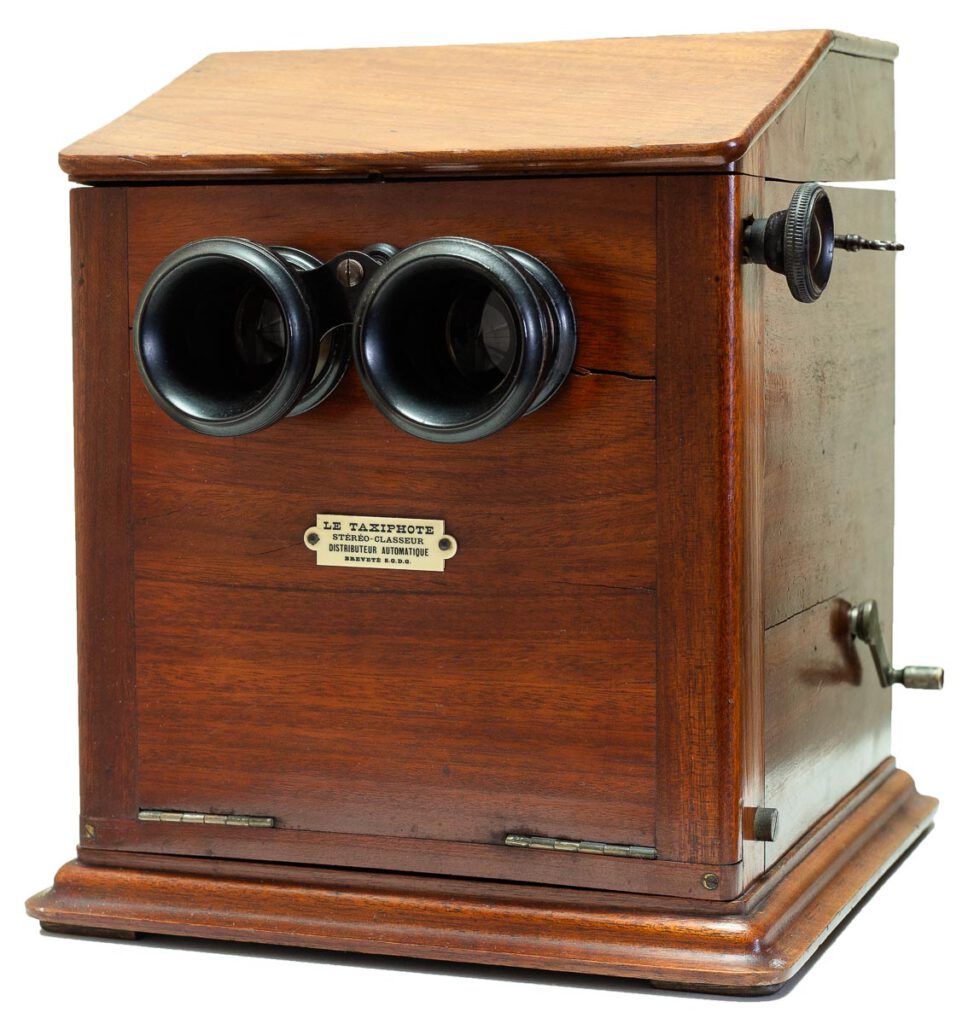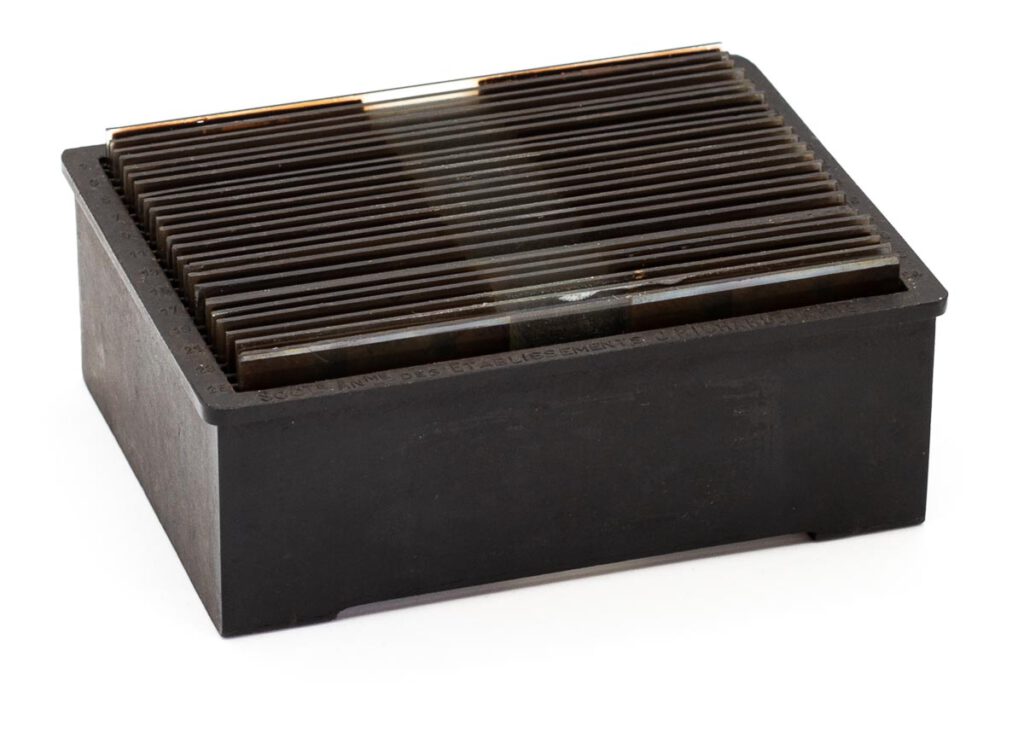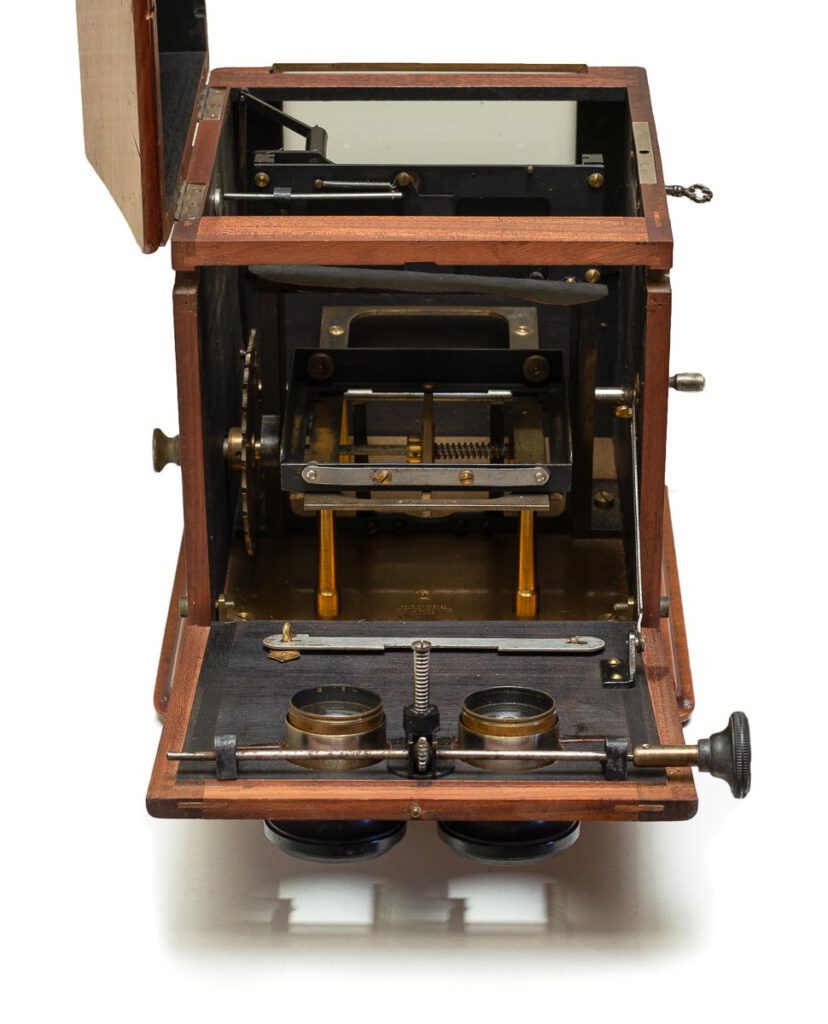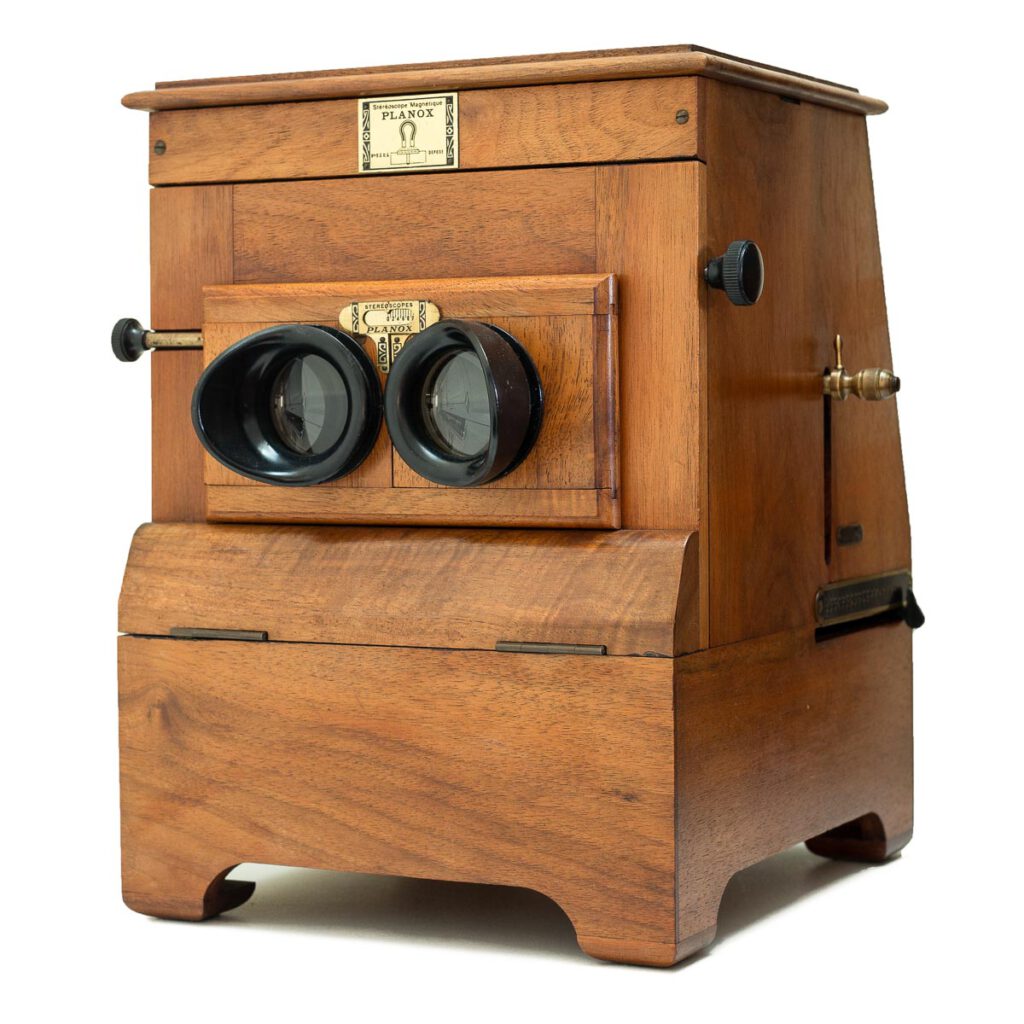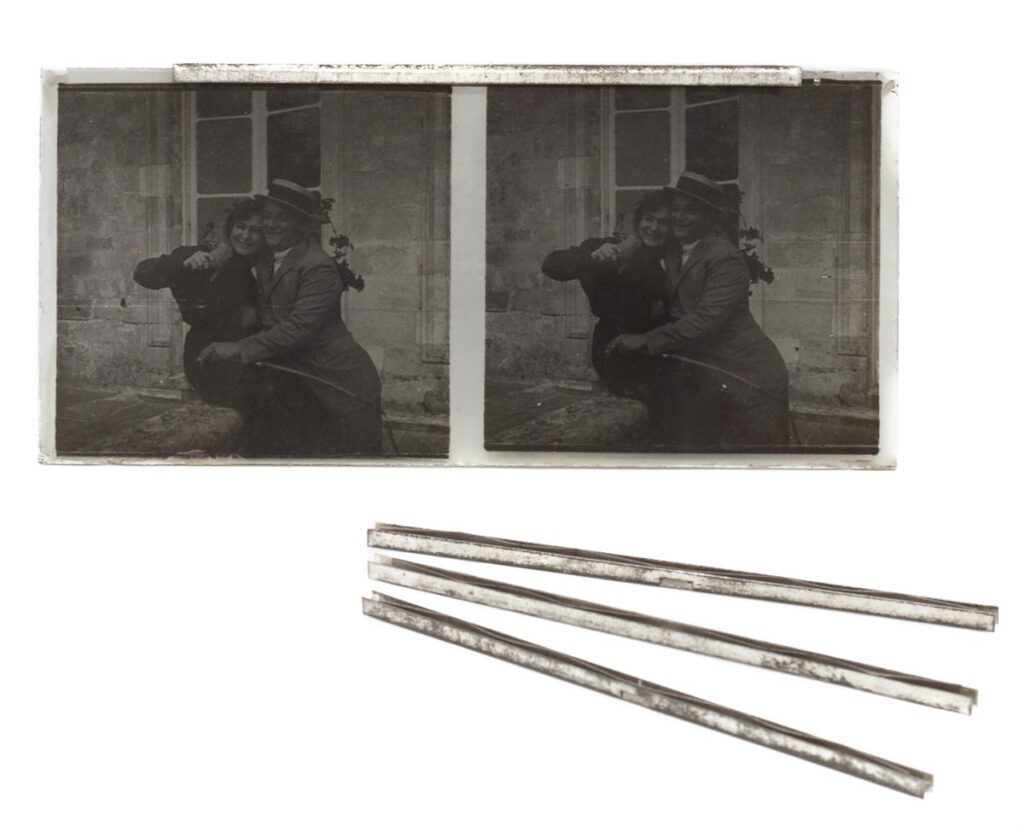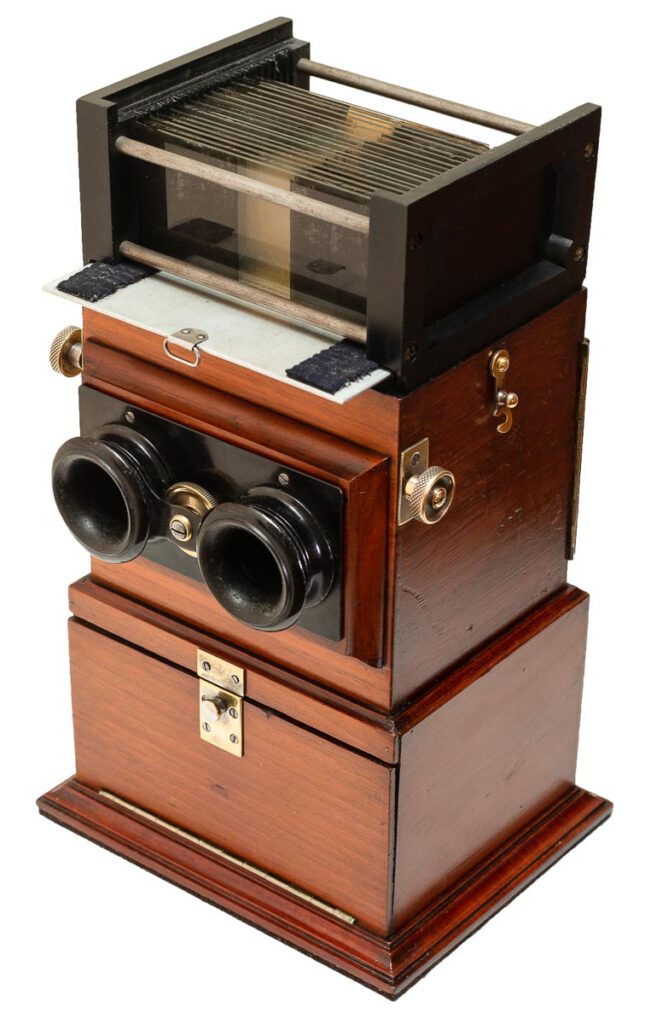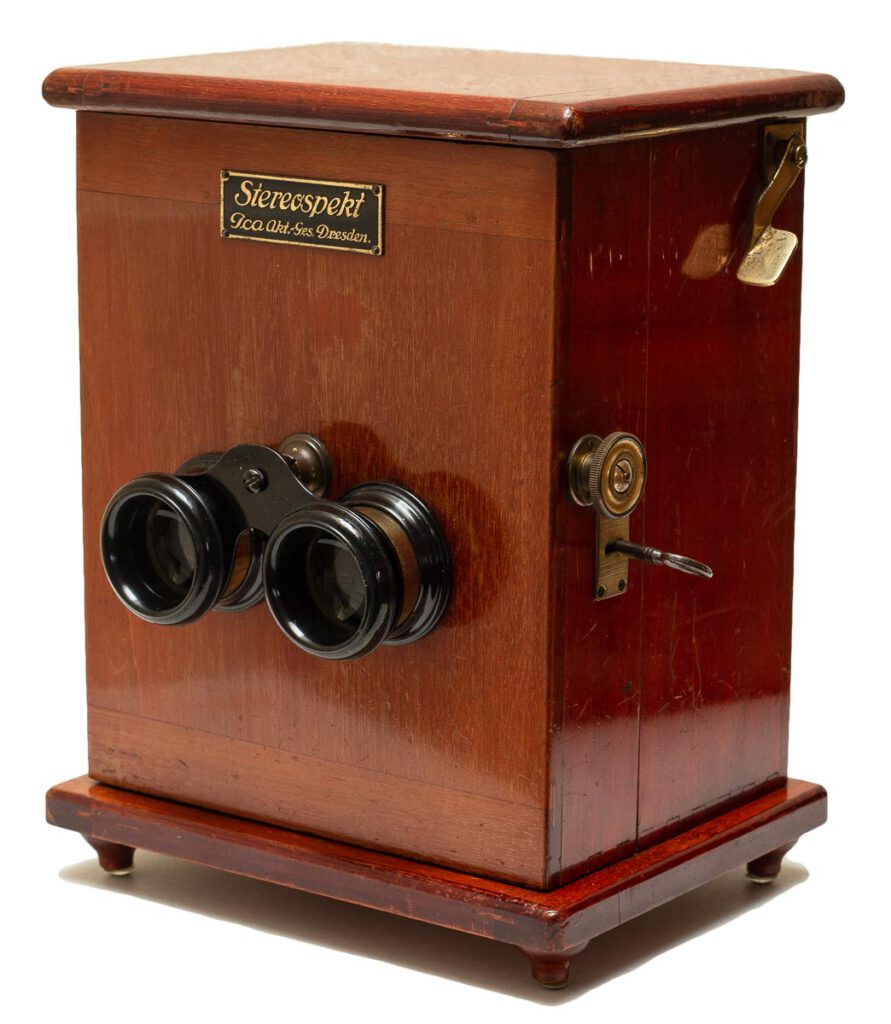A Multiview Stereoscope Comparison
written for the stereosite by André Ruiter, The Netherlands
I have been collecting stereoscopy antiques for some years now. My most cherished pieces in my collection are the multiview stereoscopes. I thought it would be interesting to compare these stereoscopes based on their mechanism which is used to position the stereo views in front of the lenses.
Multiview stereoscopes are table stereoscopes that are capable of showing multiple images in one viewing session. These viewers use a slide tray or chain in which the stereoviews are placed. By turning a crank or pushing down a lever, the images are displayed one by one. The multiviewers with slide trays are only suitable for glass stereoviews. The chain viewers are also available for paper stereocards and sometimes they support both glass and paper stereoviews.
To compare the multiviewers, I use four categories: Chain, Lifting, Pick-Up and Gravity. I came up with these categories myself so they’re not commonly used classifications among enthusiasts.
Chain stereoscopes
The revolving chain types are the oldest multiview stereoscopes. They were produced from 1860 and are based on a patent of Alexander Beckers from New York. They are therefore also called American or Beckers stereoscope.
This type of mechanism includes a chain and holders. The chain is made of wood and iron or completely iron for viewers that support heavier glass slides. A stereoview is placed in each holder. By turning a knob, the stereoview is placed in a vertical position in front of the lenses. Turning the chain further will display the next stereoview. A chain can usually have 50 stereoviews, but there are also tall floor standing models that are suitable for 100 or 200 images. The viewing experience isn’t great with these viewers and replacing the stereoviews can be cumbersome. Some models allow removing the entire chain with holders from the device, which will make replacing the stereoviews easier. Most English and France manufacturers from 1860 to 1930 had a revolving chain type stereoscope in their product range.
Lifting stereoscopes
These are the most sophisticated stereoscopes. They use a bakelite or wooden slide tray to place the glass slides. A slide tray has room for around 25 slides. Depending on the model, special trays for the thicker Autochrome slides are also available.
The lifting stereoscopes use an advanced mechanism, often with gears and springs to display the stereoviews. The tray with glass slides is placed in the device. By turning a crank or pressing down a lever, a stereoview is pushed up from the tray by a metal pin and is placed in front of the lenses. Rotating further lowers the stereoview and places it back in the tray. Within the same movement, the tray is moved forward over a rail so the next slide can be lifted.
The lifting stereoscopes are user friendly and offer a good viewing experience. They require that the mechanism is in good working condition because a slight misalignment will cause jamming and can break your glass slides. Some examples of lifting stereoscopes are the Taxiphote of Jules Richard, Unis France Métascope, Gaumont Stéréodrome, Ernemann Magazin and the table stereoscopes of Hemdé.
Pick-Up stereoscopes
This is a variation on the lifting stereoscopes. It was an invention of Alexander Plocq from Paris and his Planox Stéréoscope Magnétique are the only models that work this way. The mechanism works roughly the same as the lifting stereoscopes, but instead of lifting the slides they are picked up by a magnet. Each slide has to be provided with a metal strip at the top to make the slides magnetic.
The mechanism works well in practice, but I don’t see any real advantages compared to the lifting devices. A disadvantage is that you have to provide every slide with a metal strip. Once attached, you should leave it because removing them can damage the glass and the emulsion.
Gravity stereoscopes
This type of stereoscope excels because of its simple mechanism. It uses gravity to place the slides by a “falling motion”. The lack of a sophisticated mechanism allows a compact design. The first example is the Multiphote, designed by Lucien Bize.
The Multiphote tray with 24 slides is placed on the top section of the device. By removing a metal slide at the bottom of the tray, the slides fall into position. The empty tray is now placed in the bottom part of the device to catch the slides.
By turning the knobs, the viewer part with the lenses moves outward and the rearmost slide falls down and is placed in viewing position. By turning the knobs a little bit further, the slide drops into the slot of the slide tray. This procedure is repeated for every slide. After viewing all the slides, the tray can be removed from the bottom part to reload the device.
The second example is the ICA Stereospekt from Germany. The slides of the Stereospekt are mounted in a metal harmonica belt with frames. The belt can contain up to 12 slides. The slides are firmly clamped in frames, which indicates that the slides should remain permanently in the belt. By depressing a small lever on the right side, the slides are released and “fall” in front of the lenses.
André Ruiter (Putten, The Netherlands)
I’m a Dutch photographer who specializes in conceptual black & white photography. My photo projects are based on historic themes.
While working on a project about the First World War battlefield of Verdun in France, I discovered French glass stereoviews. This resulted in my great interest in stereo photography and I am now a passionate collector of French and German stereoscopy antiques from 1850 to 1930.
On my website I share my black & white photography and blogs about stereoscopy history and my collection.
Website: www.andreruiter.nl
Instagram-profile: andreruiter
Facebook-profile: andreruiterphotography

